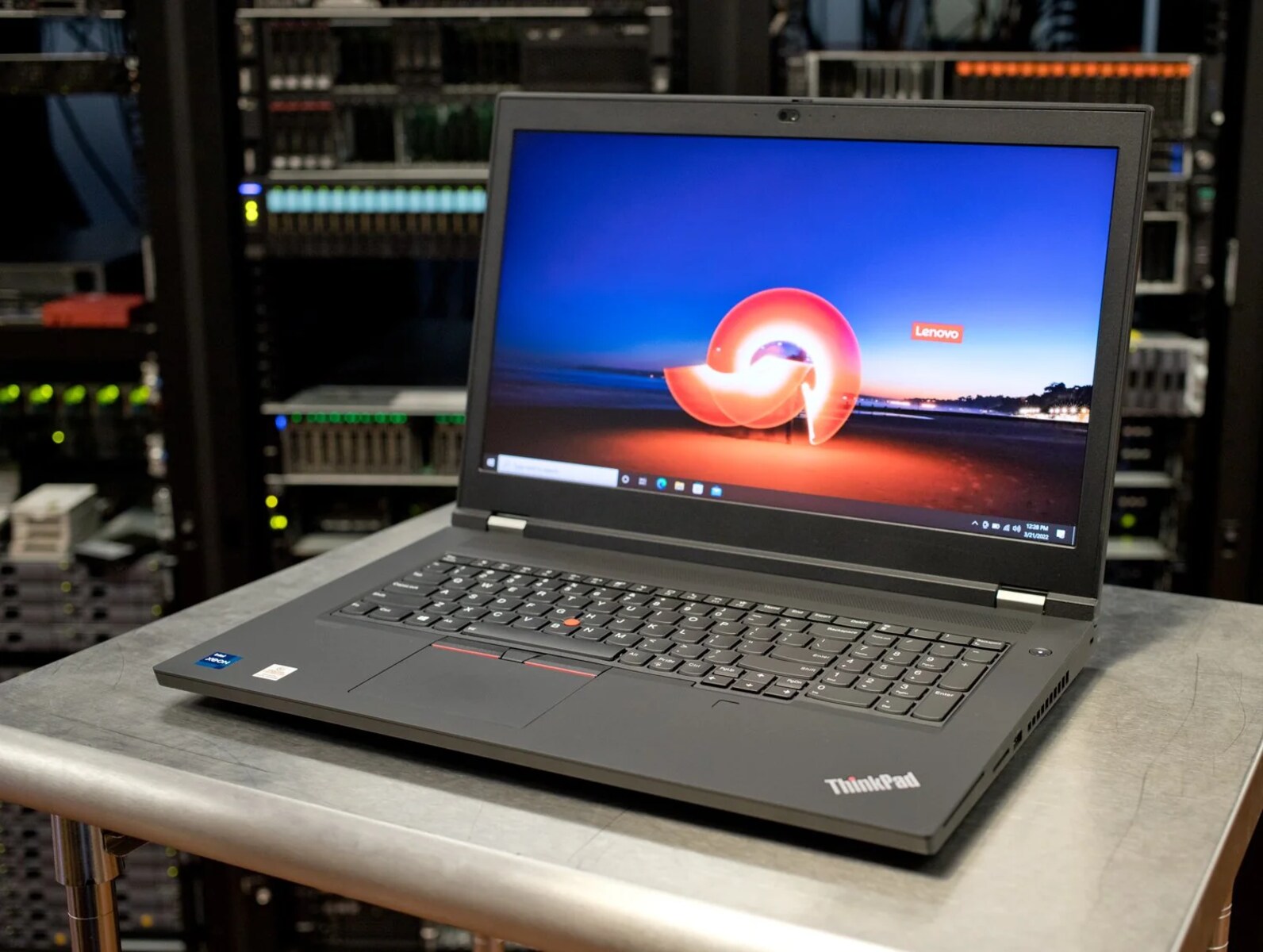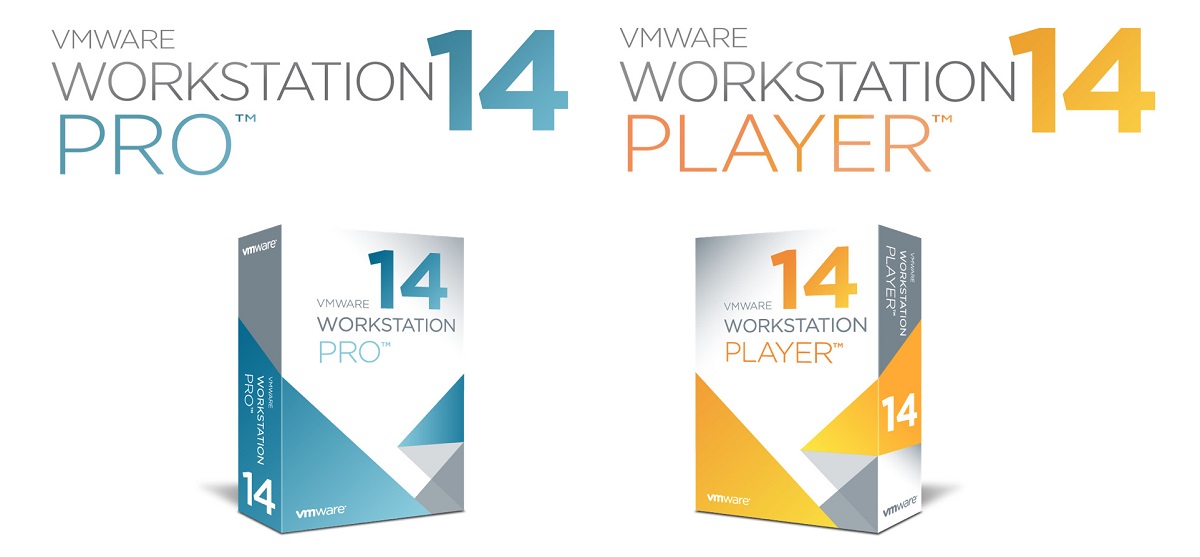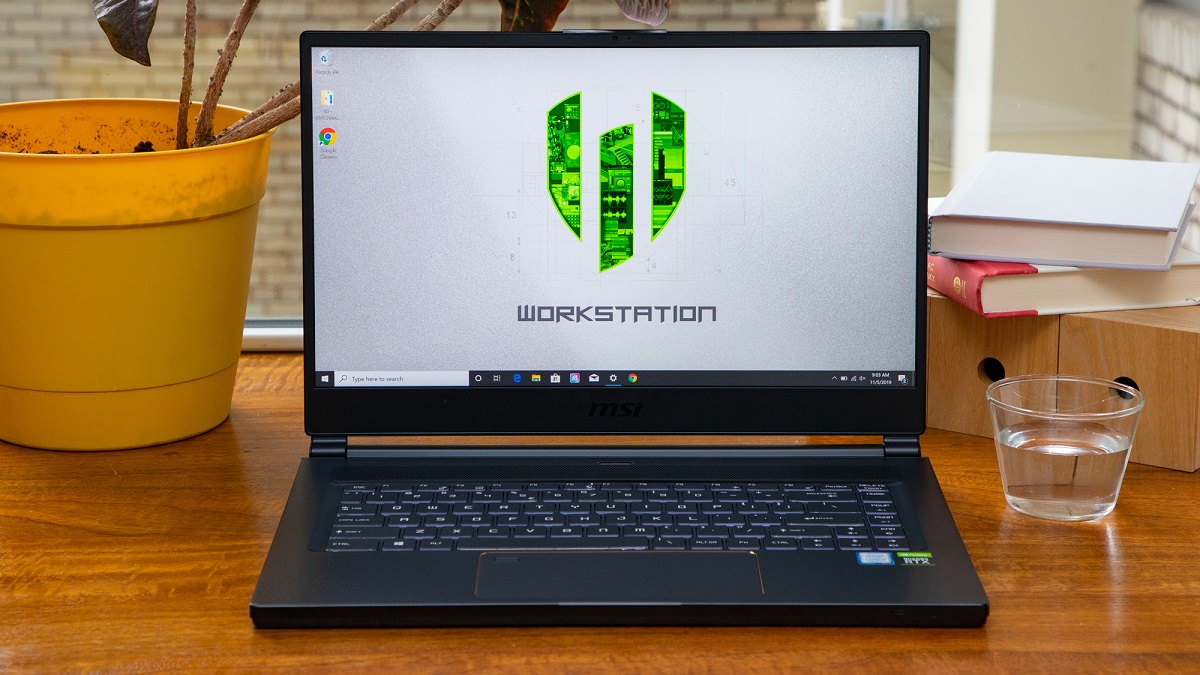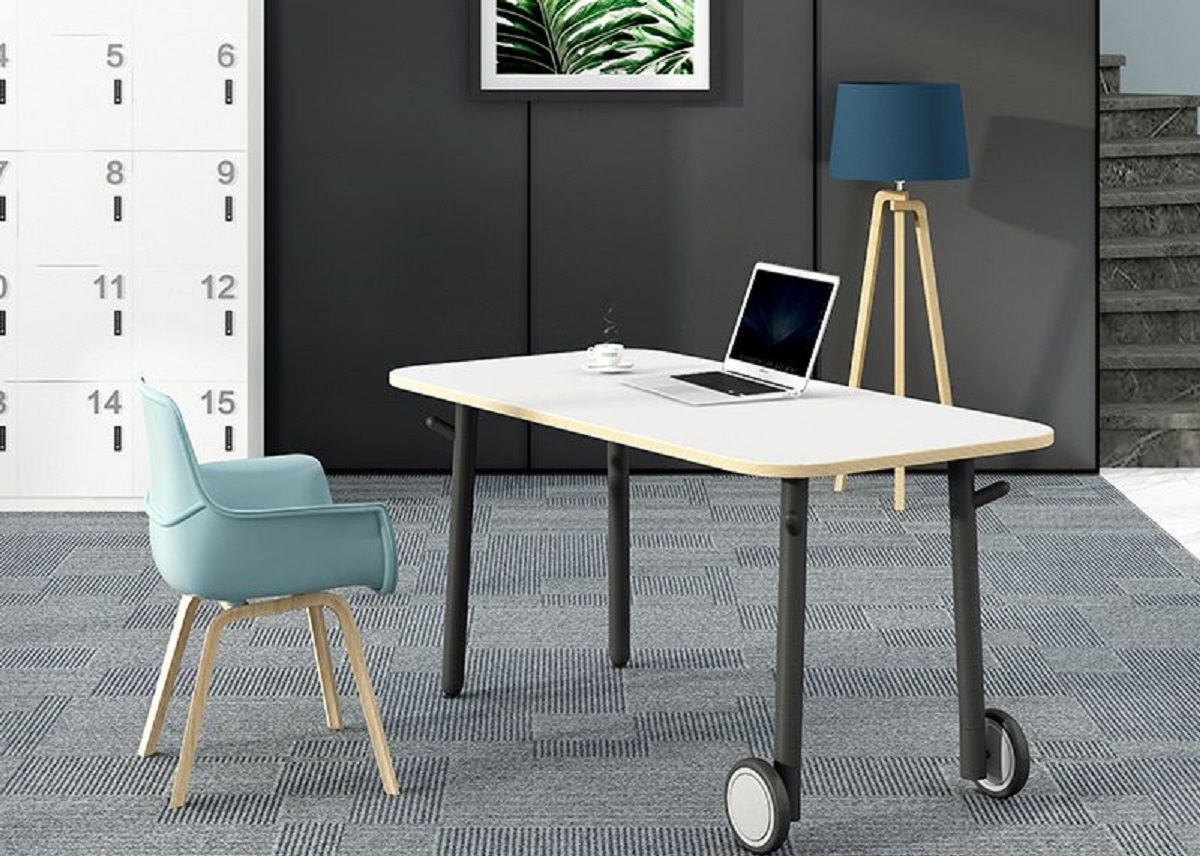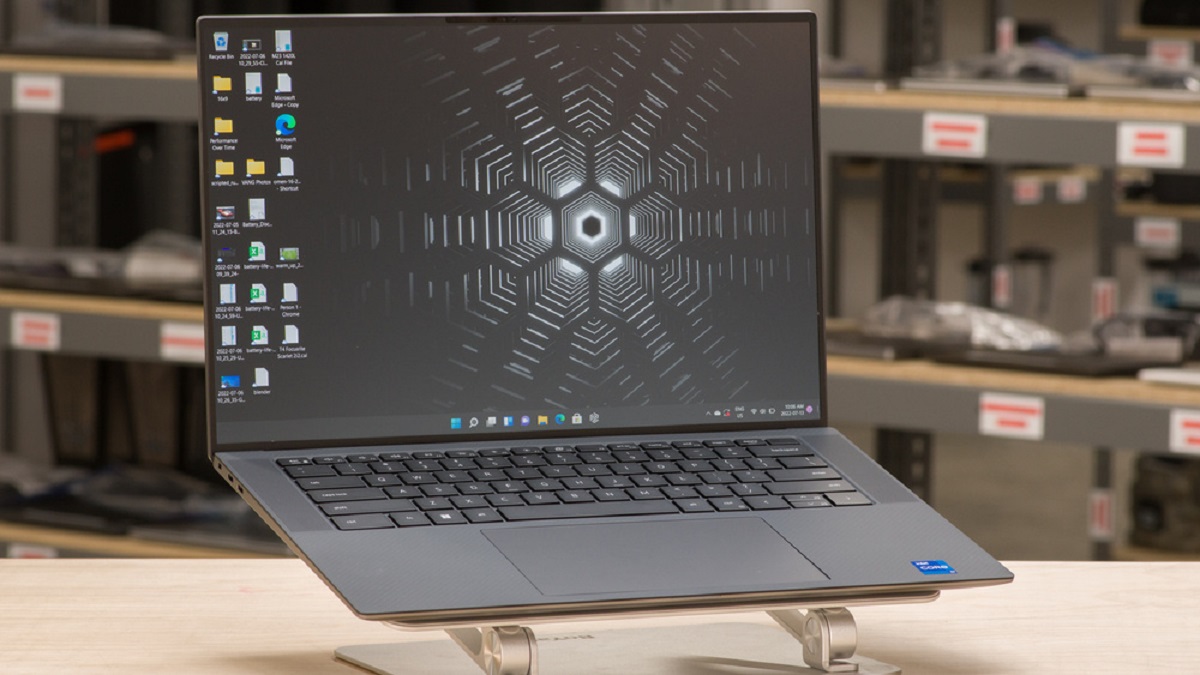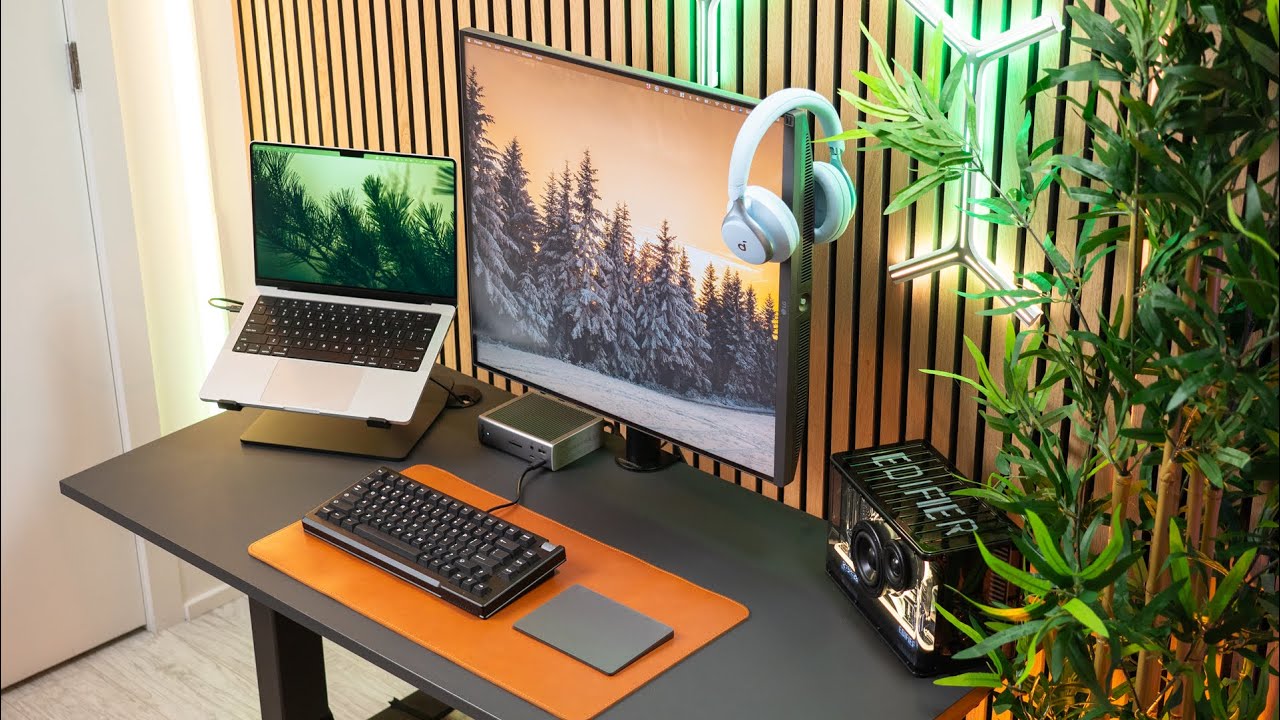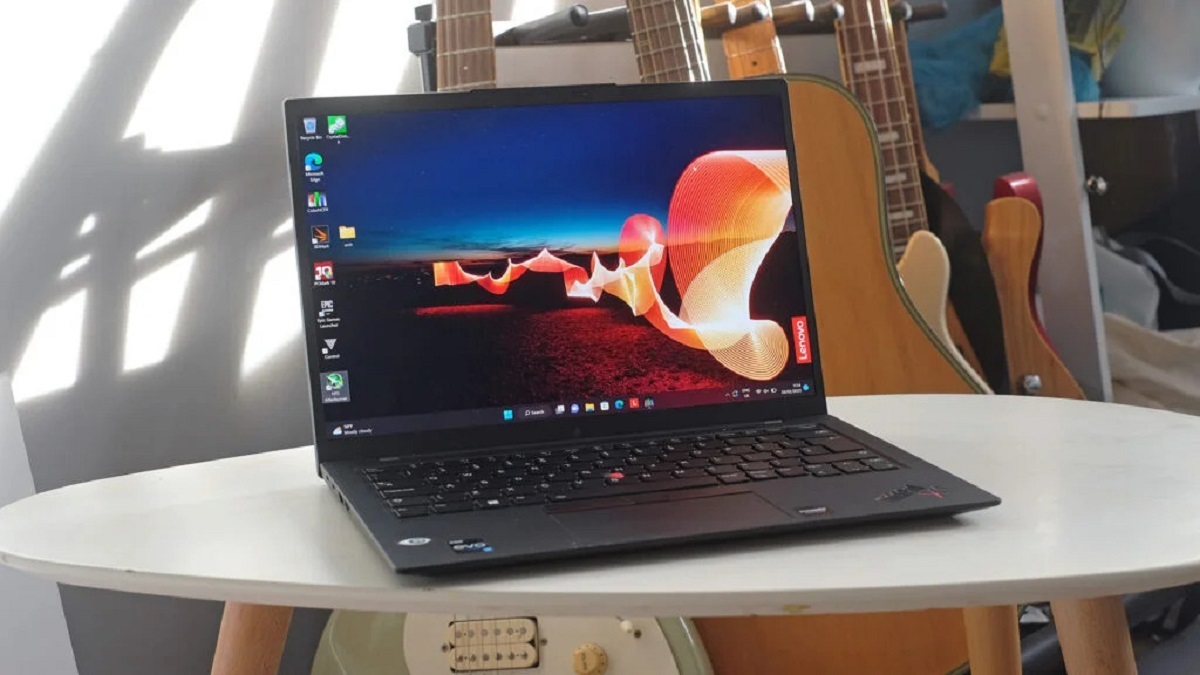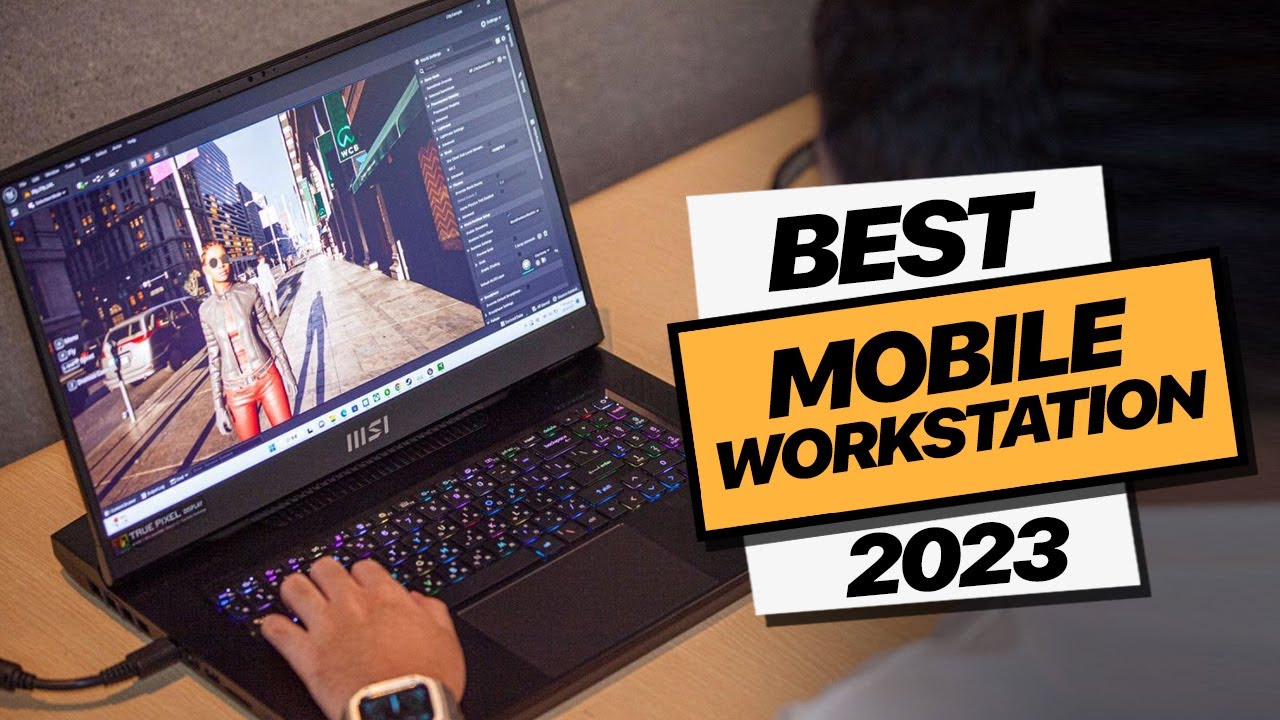Introduction
Mobile workstations have become an essential tool for professionals who require powerful computing capabilities while on the go. These portable workhorses offer a combination of performance, durability, and mobility, making them ideal for a variety of industries such as graphic design, engineering, architecture, and video editing. With the advancement of technology, mobile workstations have evolved to meet the demanding needs of professionals who require robust hardware, stunning displays, and reliable performance.
Unlike traditional laptops, mobile workstations are specifically engineered to handle resource-intensive tasks. They are designed to provide exceptional processing power, outstanding graphics performance, and enhanced connectivity options. The versatility of mobile workstations allows professionals to work seamlessly regardless of their location.
When considering a mobile workstation, there are several key features to look out for. The design and construction should be portable and lightweight, enabling professionals to carry their workstation without being burdened by excessive weight. Additionally, the hardware should be of the highest quality, providing the necessary power to handle complex tasks effortlessly.
The graphics and display quality of a mobile workstation are crucial as they directly impact productivity and design accuracy. A high-resolution display with accurate color reproduction ensures that professionals can work on intricate designs with precision. Furthermore, a mobile workstation should offer a long battery life to support extended usage without the need for frequent charging.
Connectivity options are essential in a mobile workstation as they allow professionals to quickly and easily transfer data, connect to peripheral devices, and facilitate collaboration. Reliable and durable construction ensures that the workstation can withstand the rigors of regular travel and use, providing peace of mind to users.
Ergonomic design and a comfortable typing experience are often overlooked but play a vital role in long-term usage. Professionals spend hours typing and working on their mobile workstations, so it is imperative that the keyboard and overall design are ergonomically optimized to prevent strain and discomfort.
In terms of software compatibility, mobile workstations should support popular operating systems and a wide range of professional software. This allows professionals to seamlessly transition from desktop workstations to their mobile counterparts without sacrificing functionality.
Security features are paramount when working with sensitive and confidential data. Mobile workstations should include robust security measures such as biometric authentication and data encryption to ensure the privacy and safety of important files and information.
Price is a significant factor when considering a mobile workstation. Professionals need to evaluate the features, performance, and value for money a workstation offers to ensure it aligns with their specific requirements and budget.
In this article, we will delve deeper into the features and considerations that make a mobile workstation an indispensable tool for professionals in various fields. By understanding the key factors to look for in a mobile workstation, you can make an informed decision and choose the perfect workstation to help you excel in your work.
Portable and Lightweight Design
One of the most significant advantages of a mobile workstation is its portable and lightweight design. Unlike traditional desktop workstations, mobile workstations are specifically engineered to be easily carried and used on the go. This portability allows professionals to work from anywhere, whether it’s in a coffee shop, on a client site, or while traveling.
A portable and lightweight design is essential for professionals who are constantly on the move. The compact size and lightweight construction of a mobile workstation make it easy to carry in a backpack or laptop bag without adding unnecessary weight. This ensures that professionals can work efficiently without feeling burdened by a heavy workstation.
Furthermore, the slim profile of a mobile workstation allows it to fit into tight spaces and be more maneuverable in various work environments. Whether you’re working from a cramped airplane seat, a small cafe table, or a crowded office, a mobile workstation with a portable design will not hinder your productivity due to its size.
In addition to the physical aspect, the portability of a mobile workstation is enhanced by its power options. Many mobile workstations offer long-lasting battery life, allowing professionals to work for extended periods without the need for constant charging. This eliminates the concern of finding a power outlet in every location and provides the flexibility to work without interruption.
Moreover, the advancements in solid-state drive (SSD) technology have further contributed to the portability of mobile workstations. SSDs are lighter and more shock-resistant than traditional hard drives, making them ideal for mobile use. This enables professionals to have fast and reliable access to their files and applications while minimizing the risk of data loss due to accidental drops or bumps.
Overall, a portable and lightweight design is a crucial factor to consider when choosing a mobile workstation. It offers professionals the freedom and flexibility to work from any location without sacrificing performance or functionality. Whether you’re a digital artist working on a client’s premises or an engineer conducting field inspections, a mobile workstation with a slim and lightweight design will empower you to work efficiently and effectively.
High-Performance Hardware
One of the most important factors to consider when selecting a mobile workstation is its high-performance hardware. Mobile workstations are specifically designed to handle resource-intensive tasks that demand significant processing power, memory, and storage capabilities.
A powerful processor is the heart of any mobile workstation. Processors with multiple cores and high clock speeds provide the necessary horsepower to handle complex calculations and multitasking. Whether you’re rendering 3D models, running simulations, or editing high-resolution videos, a robust processor ensures smooth and efficient performance.
In addition to the processor, a generous amount of RAM is essential for seamless multitasking. Professionals often work with multiple applications simultaneously, and having sufficient RAM ensures smooth transitions between tasks without any lag or performance degradation. Look for a mobile workstation with at least 16GB of RAM, although for more demanding tasks, 32GB or higher may be preferred.
Storage is another critical aspect of high-performance hardware. Mobile workstations often offer a combination of solid-state drives (SSD) and traditional hard drives (HDD). SSDs provide lightning-fast read and write speeds, enabling quick access to files and reducing loading times for applications. On the other hand, HDDs offer larger storage capacities for storing large files such as high-resolution images, videos, and project files. Opting for a mobile workstation with a hybrid storage configuration allows for both speed and ample storage capacity.
When it comes to graphics performance, mobile workstations are equipped with dedicated graphics cards that surpass the capabilities of integrated graphics found in regular laptops. A powerful graphics card ensures smooth rendering, real-time visualization, and accurate color representation. Professionals working with graphic design, CAD, and 3D modeling applications should prioritize a workstation with a high-quality graphics card.
Thermal management is another consideration when it comes to high-performance hardware. Intensive tasks generate a significant amount of heat, and proper thermal management is essential to prevent overheating and maintain optimal performance. Look for a mobile workstation with effective cooling systems, such as multiple fans and heat pipes, to ensure efficient heat dissipation.
Overall, investing in a mobile workstation with high-performance hardware is crucial for professionals who require processing power, ample memory, fast storage, and superior graphics capabilities. With the right hardware specifications, you can tackle complex tasks with ease and without any compromise in performance or productivity.
Graphics and Display Quality
When it comes to mobile workstations, the graphics and display quality play a crucial role in delivering accurate visual representation and enhancing productivity. Whether you’re working on graphic design, video editing, or CAD/CAM applications, having a high-quality display is essential for precise image rendering and an immersive visual experience.
A high-resolution display is a key feature to look for in a mobile workstation. A higher pixel density ensures sharper and more detailed images, making it easier to work on intricate designs or analyze fine details. Look for mobile workstations with displays that offer at least Full HD (1920×1080) resolution, although higher resolutions like 4K (3840×2160) or even higher are becoming more common.
Color accuracy is another crucial aspect to consider, especially for professionals in graphic design and video editing. A mobile workstation with a display that covers a wide color gamut and provides accurate color reproduction ensures that your designs or edits appear as intended. Look for workstations that offer support for industry-standard color spaces like Adobe RGB or DCI-P3, as they provide a broader range of colors and more precise color accuracy.
Besides resolution and color accuracy, the display technology itself contributes to the overall viewing experience. In-plane switching (IPS) panels are highly desirable due to their wide viewing angles and accurate color reproduction from different directions. This ensures that others can view your work with the same level of detail and color accuracy, making collaboration easier.
Another factor to consider is screen size. Depending on your requirements and preferences, you can choose a mobile workstation with a larger display for better screen real estate or a more compact display for increased portability. Displays typically range from 13 to 17 inches, allowing you to find the right balance between usability and mobility.
Additionally, some mobile workstations offer touch-enabled displays, which can be beneficial for professionals who work with touch-based applications or require precise input using a stylus. Touchscreens provide a more intuitive and interactive user experience, enhancing productivity and creativity.
Lastly, consider the overall display quality in terms of brightness, contrast ratio, and anti-glare coatings. A bright display improves visibility in well-lit environments, while a high contrast ratio ensures vibrant and rich visuals. Anti-glare coatings help reduce reflections, allowing you to work comfortably even in brightly lit environments.
By prioritizing graphics and display quality, professionals can ensure accurate color representation, detailed image rendering, and an immersive visual experience. A high-quality display plays a crucial role in enhancing productivity and delivering exceptional work, making it an essential consideration when choosing a mobile workstation.
Battery Life
Battery life is a critical factor to consider when selecting a mobile workstation, as it directly affects the device’s portability and usability. Professionals who rely on their workstations for extended periods without access to power outlets need a device that can sustain their productivity throughout the day.
The battery life of a mobile workstation can vary significantly depending on factors such as the hardware configuration, display settings, and usage patterns. It is important to look for workstations that offer long battery life, ideally eight hours or more, to ensure uninterrupted usage throughout the workday.
Advanced battery technologies, such as lithium-polymer batteries, have enabled manufacturers to create mobile workstations with improved battery life. These batteries offer higher energy density, resulting in longer usage times and reduced charging frequency.
In addition to the battery capacity, power optimization features can further extend the battery life of a mobile workstation. Some workstations come with power management settings that allow users to control the power consumption of the device. These settings can adjust the performance of the processor, reduce display brightness, and manage background processes to maximize battery efficiency.
Another consideration is the presence of fast-charging capabilities. Being able to quickly charge the battery can be a lifesaver in situations where you have limited time but need to get back to work. Look for mobile workstations that support fast-charging technologies like USB-C Power Delivery or proprietary charging technologies.
It’s worth noting that heavy resource-intensive tasks, such as video editing or 3D rendering, can significantly drain the battery life of a mobile workstation. In these cases, having access to power outlets or carrying a portable power bank may be necessary to ensure uninterrupted work.
Ultimately, the battery life of a mobile workstation greatly impacts its usability and portability. A longer battery life allows professionals to work without needing to constantly search for power outlets or carry bulky chargers. When choosing a mobile workstation, consider your work requirements and select a device with a battery life that aligns with your needs.
Connectivity Options
Connectivity options are a crucial consideration when choosing a mobile workstation, as they determine how easily you can connect to peripherals, transfer data, and collaborate with others. A comprehensive range of connectivity options ensures that you can seamlessly integrate your mobile workstation into your workflow and stay productive.
One of the most important connectivity features is the availability of USB ports. Look for workstations that offer a variety of USB ports, including both USB Type-A and USB Type-C. USB Type-A ports are essential for connecting external storage devices, printers, and other accessories, while USB Type-C ports provide greater versatility and are capable of supporting high-speed data transfer, video output, and power delivery.
In addition to USB ports, mobile workstations should also offer other essential connectivity options such as HDMI or DisplayPort for connecting external displays, an Ethernet port for fast and reliable wired internet connectivity, and an audio jack for headphones or external speakers. These ports allow for seamless integration with existing peripherals and ensure compatibility with a wide range of devices.
Wireless connectivity is equally important. Wi-Fi connectivity allows you to connect to the internet and access cloud-based services from anywhere with a Wi-Fi network. Look for workstations that support the latest Wi-Fi standards, such as Wi-Fi 6 (802.11ax), for faster and more stable wireless connections.
Bluetooth connectivity is also valuable, as it enables wireless communication with peripherals such as mice, keyboards, and headphones. Having Bluetooth capability eliminates the need for additional cables and provides a clutter-free workspace.
For professionals who frequently travel or work in remote locations, built-in mobile broadband options, such as 4G or 5G connectivity, can provide reliable internet access even when Wi-Fi networks are not available. This ensures uninterrupted productivity and the ability to stay connected wherever you are.
Increasingly, mobile workstations are also incorporating Thunderbolt 3 or Thunderbolt 4 ports. These ports offer an incredibly fast data transfer rate, expand the available connectivity options, and allow for daisy-chaining multiple devices. This is particularly useful for professionals who require high-speed data transfer or wish to connect their workstation to external graphics cards or multiple displays.
Overall, a mobile workstation with a comprehensive selection of connectivity options provides flexibility, convenience, and compatibility with a wide range of peripherals and devices. Whether you’re connecting external monitors, transferring data, or collaborating with others, having the right connectivity options ensures that your mobile workstation seamlessly integrates into your workflow.
Reliable and Durable Construction
Reliability and durability are crucial factors to consider when selecting a mobile workstation. As mobile workstations are often used in various environments and subjected to frequent travel, it is essential that they are built with sturdy and resilient materials to withstand the rigors of daily use.
One of the key factors that contribute to reliable construction is the build quality of the mobile workstation. Look for workstations made with high-quality materials, such as aluminum or magnesium alloy, which provide strength and durability while keeping the device lightweight. These materials can withstand the regular bumps and knocks that occur during transportation without sacrificing the overall structural integrity of the workstation.
A robust hinge mechanism is also crucial in supporting the display of a mobile workstation. The hinges should be strong enough to hold the display securely in place while allowing for smooth adjustments and preventing any wobbling. A sturdy hinge ensures that the display remains stable even when using the touchscreen or when working on an uneven surface.
Furthermore, the keyboard and touchpad should be designed to withstand the demands of heavy usage. Look for workstations with keyboards that have a solid and responsive feel, with keys that do not show signs of wear or stickiness over time. The touchpad should be smooth and accurate, providing precise cursor control without any jitters or lag.
Dust and spill resistance are additional features that enhance the reliability and durability of a mobile workstation. Having a spill-resistant keyboard and a dust-resistant chassis safeguards the internal components from accidental liquid spills and debris. This adds an extra layer of protection, particularly for professionals who work in environments where spills and dust are common.
Another aspect to consider is certification for military-grade durability standards, such as MIL-STD 810G. Workstations that meet these standards have undergone rigorous testing to ensure their ability to handle extreme conditions, including temperature fluctuations, high humidity, vibration, and shock. Certification provides assurance that the device can withstand demanding environments and remain reliable in challenging situations.
Finally, proper thermal management is an essential aspect of reliable construction. Mobile workstations generate heat during intensive tasks, and an effective cooling system is necessary to dissipate that heat and prevent overheating. A well-designed cooling system with strategically placed fans and heat pipes ensures that the workstation remains cool and performs optimally even during prolonged usage.
By choosing a mobile workstation with reliable and durable construction, professionals can have peace of mind knowing that their device can withstand the demands of their work environment and maintain consistent performance. A well-built workstation is an investment in long-term productivity and reliability.
Ergonomic Design and Comfortable Typing Experience
Ergonomic design and a comfortable typing experience are essential considerations when selecting a mobile workstation. As professionals spend countless hours typing and working on their devices, it is crucial to choose a workstation that prioritizes user comfort and minimizes the risk of strain or discomfort.
The keyboard is a central component of a mobile workstation, and a well-designed keyboard can significantly enhance the typing experience. Look for workstations with keyboards that offer a comfortable key travel distance, providing a satisfying and responsive feel with each keystroke. A backlit keyboard is also valuable, as it allows for convenient typing in low-light environments.
The ergonomics of the keyboard layout should also be considered, with a focus on placement and spacing of the keys. Ideally, the keyboard should have a layout that promotes a natural and intuitive typing position, reducing the strain on the wrists and fingers. Additionally, the presence of a dedicated numeric keypad can be beneficial for professionals who frequently work with numbers or perform data entry tasks.
An ergonomic design extends beyond just the keyboard. The overall shape and form factor of the mobile workstation should also be considered. Look for workstations with a slightly elevated keyboard deck, providing a more comfortable typing angle and reducing strain on the wrists. A well-balanced weight distribution also contributes to overall ergonomics, ensuring that the device is comfortable to hold and use for extended periods.
Display adjustments are another important aspect of ergonomics. Look for workstations that offer the ability to adjust the display angle to suit your preferred viewing position. This ensures that you can position the display at the optimal height and angle, reducing neck and eye strain during prolonged use.
Workstations with an adequate palm rest area provide additional comfort and support for the wrists during typing. A soft and textured palm rest material can enhance comfort and prevent fatigue, allowing for longer and more comfortable work sessions.
Proper ventilation is an often-overlooked aspect of ergonomic design. Adequate airflow and efficient cooling systems ensure that the device remains cool, prevent overheating, and reduce the risk of discomfort from heat exposure during intense work sessions.
Including features such as a fingerprint sensor or facial recognition adds convenience and security to the workstation. These biometric authentication options eliminate the need for repeated typing of passwords, further enhancing the overall typing and user experience.
By prioritizing an ergonomic design and comfortable typing experience, professionals can minimize the risk of discomfort, fatigue, and potential long-term health issues associated with extended computer usage. A well-designed mobile workstation that offers a comfortable typing environment promotes productivity and ensures that you can work without distractions or physical strain.
Operating System and Software Compatibility
The operating system (OS) and software compatibility are critical considerations when selecting a mobile workstation. Compatibility ensures that you can seamlessly run the software applications you rely on for your work and take full advantage of the workstation’s capabilities.
Most mobile workstations offer a choice between Windows, macOS, or Linux as the operating system. The choice of operating system largely depends on your personal preferences and the software applications you use. Windows is the most widely used operating system and offers extensive software compatibility for a wide range of industry-standard applications. macOS, on the other hand, is popular among creative professionals for its intuitive user interface and seamless integration with Apple software and hardware. Linux is a preferred choice for professionals in specialized fields who require a high level of customization and open-source software compatibility.
Software compatibility is of utmost importance, especially if you rely on specific applications for your work. Ensure that the mobile workstation you choose is capable of running the software applications you need, whether they are 3D modeling, engineering simulations, video editing, or graphic design tools. Compatibility issues can lead to functional limitations or the inability to run certain software effectively or at all.
Additionally, check the system requirements of the software applications you use. Ensure that the mobile workstation meets or exceeds the recommended specifications for optimal performance. It’s also worth considering workstations that have been certified by software vendors for compatibility and optimal performance with their applications. This certification ensures that the hardware and software work seamlessly together, providing the best possible user experience.
Another aspect to consider is the availability of driver support for the chosen operating system. Mobile workstations with dedicated graphics cards may require specific drivers to fully utilize their capabilities. Ensure that the workstation manufacturer provides regular updates and support for the operating system you choose, as this ensures the ongoing compatibility and stability of the device.
Virtualization is another consideration for professionals who require compatibility with multiple operating systems or need to run legacy software. Look for mobile workstations that offer virtualization support, allowing you to run different operating systems in virtual machine environments without compromising performance.
Ultimately, choosing a mobile workstation that offers excellent operating system compatibility and software support ensures that you can seamlessly integrate your workflow and maximize productivity. It allows you to focus on your work without disruptions or limitations imposed by incompatible software or operating systems.
Security Features
Security is a paramount concern when it comes to mobile workstations. As professionals store and work on sensitive and confidential data, it is vital to choose a workstation that offers robust security features to protect against potential threats and unauthorized access.
One of the most crucial security features is biometric authentication, such as fingerprint sensors or facial recognition. These features provide an added layer of security, ensuring that only authorized users can access the workstation and its contents. Biometric authentication eliminates the risk of password theft or unauthorized access through stolen or leaked credentials.
Data encryption is another essential security feature to safeguard sensitive information stored on the workstation. Look for workstations that offer hardware-based encryption technologies, such as Trusted Platform Module (TPM) or self-encrypting drives. These features encrypt data at the hardware level, making it virtually impossible for unauthorized users to access or retrieve sensitive data even if the device is lost or stolen.
Mobile workstations often come with additional security measures such as built-in privacy screens or webcam covers. These physical security features provide protection against visual hacking or unauthorized access to your webcam, ensuring your privacy and preventing potential security breaches.
Regular software updates and security patches are crucial in maintaining a secure computing environment. Ensure that the mobile workstation you choose receives regular firmware and software updates from the manufacturer. These updates address potential vulnerabilities and ensure that your workstation is equipped with the latest security enhancements.
Secure boot technology is an important security feature to consider. It verifies the integrity and authenticity of the operating system during the boot process, preventing the execution of unauthorized or malicious code. Secure boot ensures that the workstation starts up in a secure and trusted state, reducing the risk of compromise.
Network security is also vital for mobile workstations. Look for workstations that offer features such as built-in firewalls or virtual private network (VPN) connectivity. These features protect your data and communications while connected to public or unsecured networks, safeguarding against potential attacks or unauthorized access to your workstation.
Workstation manufacturers often collaborate with software vendors to provide additional security features. Look for partnerships or certifications with leading security software providers, as these collaborations demonstrate a commitment to security and may include bundled security solutions or trial offers.
Lastly, physical security measures are important when it comes to protecting the workstation itself. Look for features such as Kensington lock slots, which allow you to physically secure your device to a stationary object and prevent theft.
By choosing a mobile workstation with robust security features, professionals can have peace of mind knowing that their sensitive data is protected and their workstation is secure from potential threats. These security features allow professionals to focus on their work without worrying about data breaches or unauthorized access.
Price and Value for Money
Price is an important consideration when selecting a mobile workstation, as it determines the overall value for money. It is essential to find a balance between the desired features and performance while staying within your budget. Assessing the price and value of a mobile workstation involves considering several factors.
The first factor to consider is the hardware configuration. Different workstations offer varying levels of performance, and the price will typically reflect the hardware specifications. Consider your specific workflow and the demanding tasks you will be performing. Determine the minimum hardware requirements needed to accomplish your work efficiently. This will assist in selecting a workstation that provides the necessary performance while avoiding overpaying for excessive hardware specifications that you may not utilize fully.
Consider the reputation and brand of the mobile workstation. Established brands may come with a higher price tag, but they often offer more extensive customer support, warranty coverage, and reliable build quality. However, it’s essential to research and compare different manufacturers to ensure you are getting the best value for your money.
Review customer reviews and ratings to gauge the satisfaction levels of existing users. These insights can provide valuable information about the real-world performance and reliability of the mobile workstation. Look for reviews that specifically address the value for money aspect, as it will help you make an informed decision.
Consider the additional features and software that come bundled with the mobile workstation. Some workstations may include complimentary software licenses or provide access to exclusive software packages. Assess the relevance and value of these additional features to your work. It may be worthwhile to invest in a slightly higher-priced workstation that offers valuable software tools that align with your needs.
Compare prices across different retailers and online platforms. Prices may vary depending on promotions, discounts, or seasonal offers. Take the time to research and seek out the best deals to ensure you are getting the best possible price for the mobile workstation you desire.
Lastly, consider the overall value for money. A mobile workstation that meets your performance and feature requirements at a reasonable price provides excellent value. Take into account factors such as warranty coverage, customer support, and the expected lifespan of the workstation. A lower-priced workstation may offer lower value if it lacks essential features or has a less sturdy build quality compared to a slightly higher-priced alternative that offers better long-term reliability and support.
By considering the price and assessing the value for money, you can make an informed decision when choosing a mobile workstation that not only meets your budget constraints but also fulfills your professional needs and expectations.
Conclusion
Choosing the right mobile workstation is crucial for professionals who require powerful computing capabilities while on the go. By considering the various factors discussed in this article, such as portable and lightweight design, high-performance hardware, graphics and display quality, battery life, connectivity options, reliable and durable construction, ergonomic design and comfortable typing experience, operating system and software compatibility, security features, and price and value for money, individuals can make an informed decision that aligns with their specific needs and preferences.
A mobile workstation’s portability, combined with high-performance hardware, allows professionals to work efficiently and handle resource-intensive tasks without being tied to a desktop workstation. The graphics and display quality of a mobile workstation ensure accurate visual representation, enhancing productivity for graphic designers, video editors, and other visually demanding professions.
The battery life of a mobile workstation is critical for professionals who work remotely or travel frequently, providing uninterrupted productivity throughout the day. Connectivity options, including a variety of ports and wireless capabilities, enable seamless integration of accessories and data transfer.
Reliable and durable construction ensures that the mobile workstation can withstand the demands of daily use and travel. An ergonomic design and comfortable typing experience minimize strain and promote long-term productivity. Operating system and software compatibility, along with robust security features, protect data and ensure the smooth running of essential applications.
Finally, considering the price and overall value for money allows professionals to make a wise investment in a mobile workstation that meets their performance requirements and fits within their budget.
By carefully evaluating these factors, professionals can select the perfect mobile workstation that empowers them to excel in their work, regardless of their location. Whether it’s designing, editing, engineering, or any other profession demanding high-performance computing, a well-chosen mobile workstation becomes an indispensable tool for achieving success in today’s fast-paced, mobile world.









